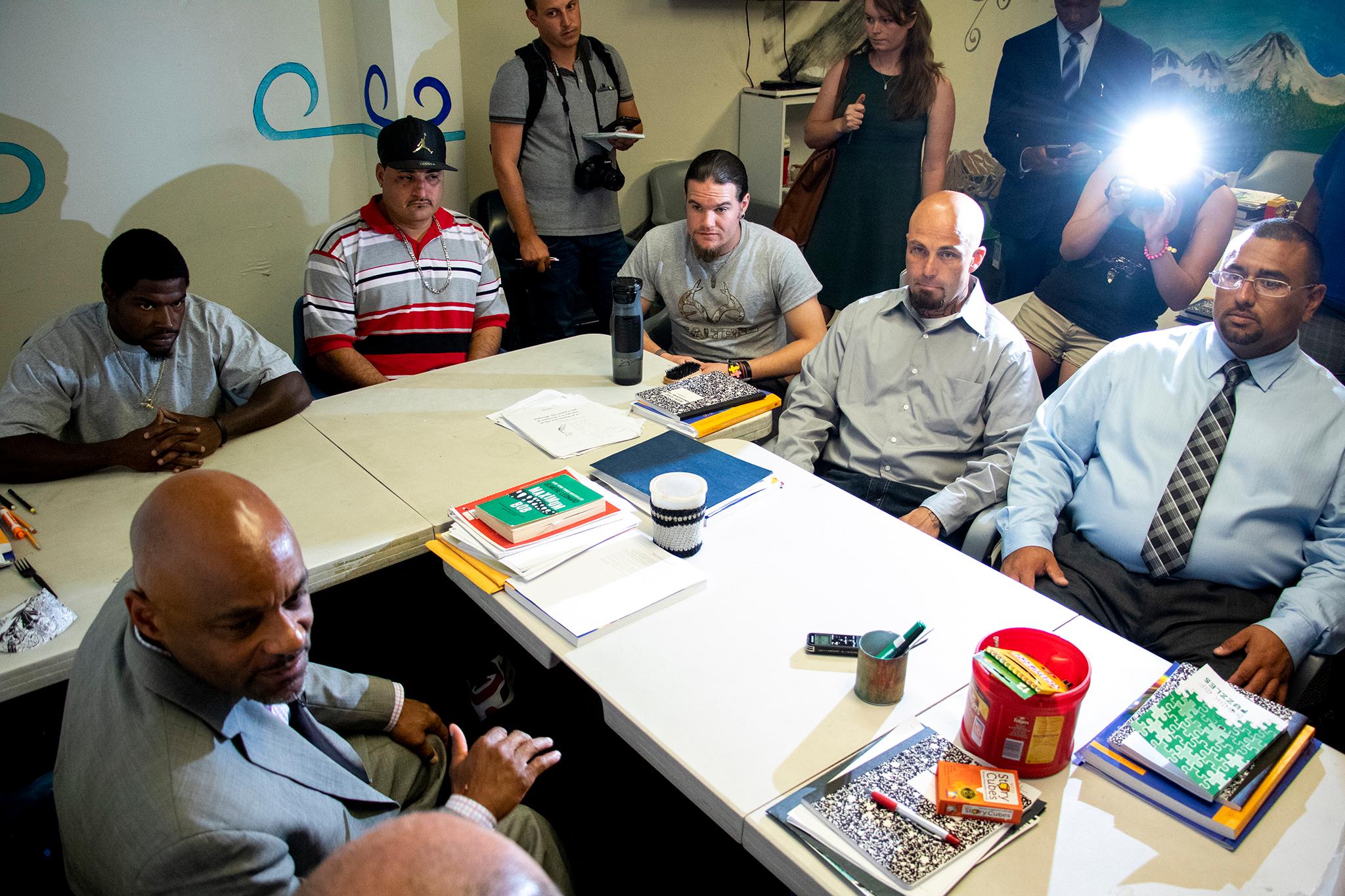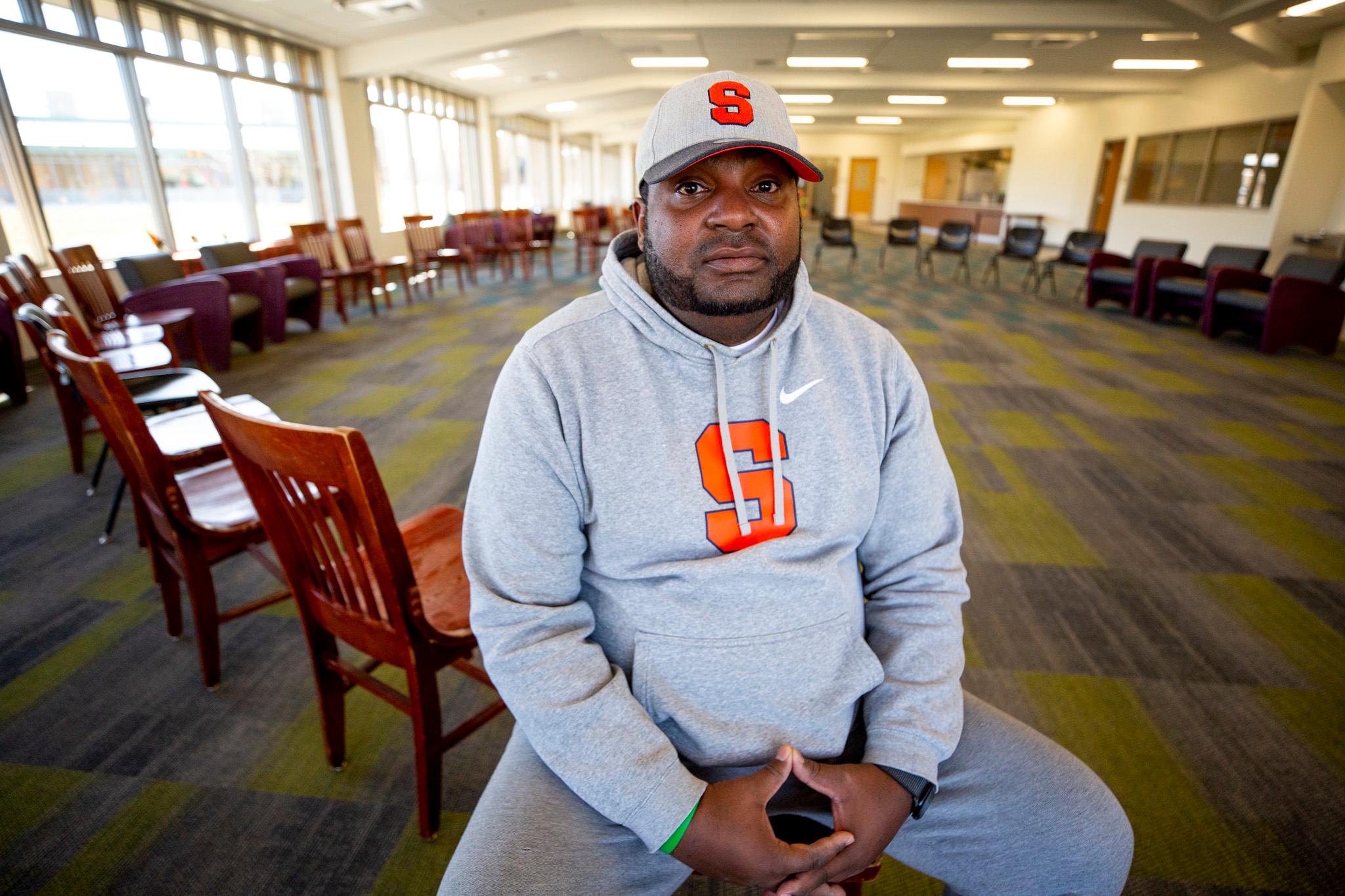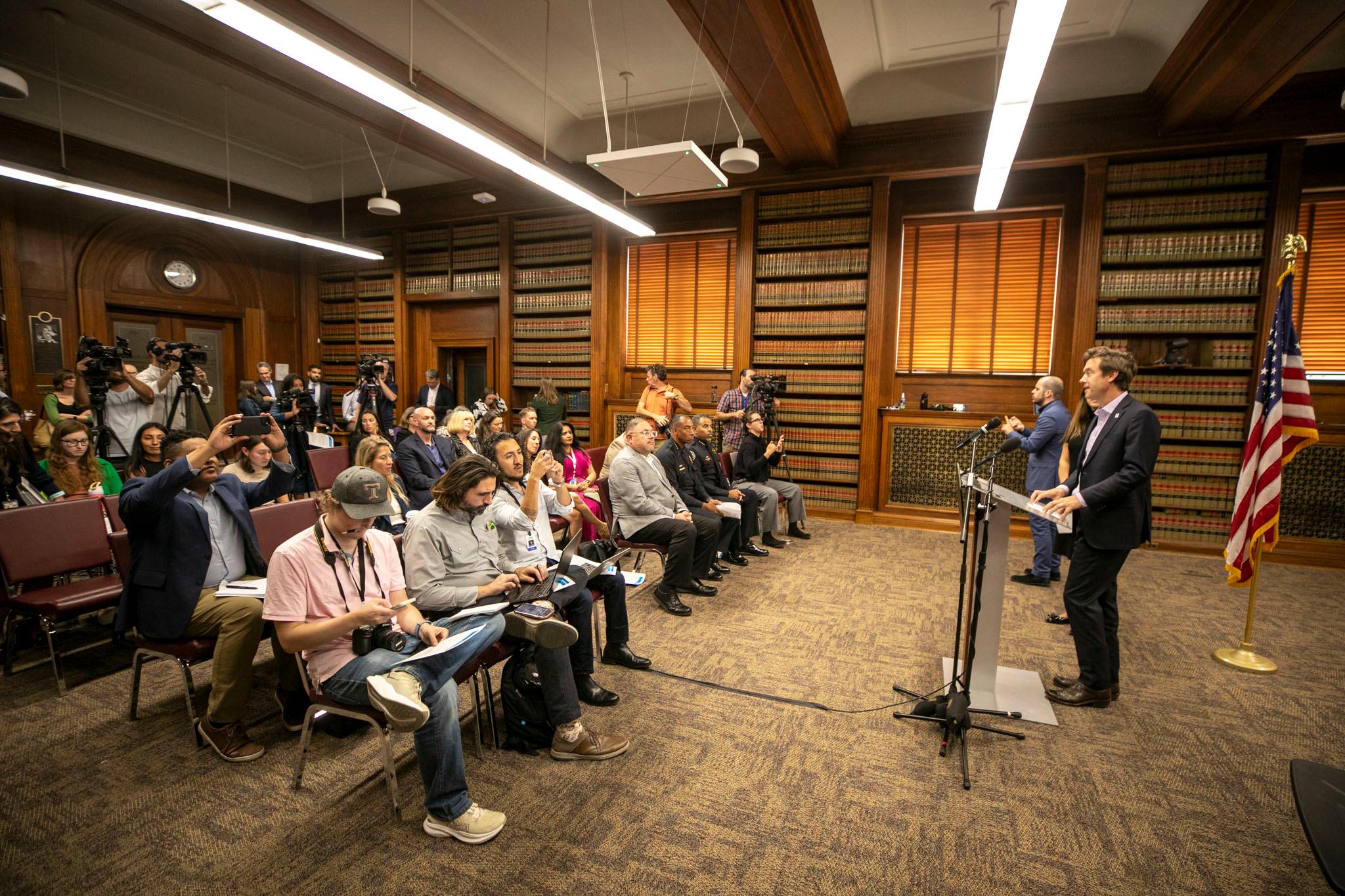When the Denver City Council voted to end halfway house contracts with GEO and CoreCivic, it was because of those companies' involvement with immigration jails outside of the city (and one close to home in Aurora). But the decision also launched a broader conversation about how Denver's halfway houses work, or don't.
On Monday, the Council will vote on a proposal from Denver's Department of Community Corrections, which oversees halfway houses. It would give CoreCivic about one more year to operate their four facilities in the city. GEO would have until the end of the year to operate their two facilities.
For some, the phasing-out represents an opportunity to reconfigure this kind of criminal rehabilitation. It could be a chance to replace corporate operators with community groups. It could also be a moment to improve outcomes.
Christie Donner, executive director of the Colorado Criminal Justice Reform Coalition, told Denverite there's been "underlying concern" about halfway house success rates for years. She's taken part in conversations at the city and state levels for some time, but she said the Council's vote elevated the concern into public awareness.
"This is not a recent phenomenon that people have been talking about how to improve outcomes," Donner said. "Denver just kind of kickstarted this in a pretty dramatic way."
Donner opposes private companies' involvement in rehabilitation.
Here's what we know about the performance of Denver's community corrections:
Colorado's Division of Criminal Justice has data on seven of the 10 halfway houses recognized by Denver's Division of Community Corrections. Donner said the remaining three may be omitted because they're operated by the federal government or, in the case of two run by the University of Colorado, facilities may be designed to treat all kinds of people and hold halfway house licenses so incarcerated people may also participate.
Program completion
No more than 56 percent of inmates completed their halfway house programs, on average, from 2016 through 2018. GEO's Tooley Hall facility in Park Hill and Williams Street operation in City Park West had the lowest average completion rates: 54 percent of inmates failed over those three years.
Many people at Tooley Hall, it should be noted, are enrolled in a cognitive behavioral therapy program. Outcomes for those residents are not represented in this data.

Nearly all people admitted to halfway houses are considered to be a high-risk for re-incarceration, Donner said. Most people on their way out of prison are released on parole.
About two-thirds of Denver's halfway house populations are felons exiting prison. The remainder have been deferred from prison.
Reasons people failed
On average, from 2016 through 2018, relatively few inmates -- less than 5 percent -- failed because they committed another crime. Depending on the program, between 17 and 26 percent of people failed because of "technical violations," or breaking program rules. Between 17 and 29 percent of people failed because they "escaped."

The definition of "escape," Donner said, is tricky. Many people staying in halfway houses are allowed to work, and they're expected to return by a specific time. "Escape" could mean a person actually ran away from the program, but it could also indicate someone returned far past curfew.
The top reason people are said to "escape," Donner said, is an addiction relapse. They get high and are too afraid to return.
While some programs, like CoreCivic's Fox Street facility in Globeville, are geared specifically towards people fighting active addictions, she said halfway houses were not created to be rehab clinics.
As a result, the system "does a lousy job responding to people who are seriously mentally ill or who have a serious drug or alcohol problem," Donner said.
Sometimes, she added, an inmate might deliberately stay out later than allowed because of a family emergency.
The "escape" data gets at a larger issue with Colorado's halfway houses. Donner said it's not constructive to lump all of these possible reasons into one category. A person's pathway to rehabilitation could be directly linked to the reasons why they "escape." Instead of analyzing reasons why people fail and working to correct them, these people are usually sent back behind bars.
"In a hospital setting, if someone passes away, they pull people together to find out what happened," she said, adding that Halfway house failures do not get the same treatment, and the lack of nuance impede improvements to the system.
Recidivism
On average, between 2014 and 2016, between 34 and 41 percent of people who completed the six programs had charges filed against them within two years of their release. GEO's Williams Street halfway house and Independence House's Pecos Street facility in Sunnyside had the highest two-year averages at 40 and 41 percent, respectively.

The state does not offer data on people who commit crimes after two years from release.
The big picture
Combining recidivism and failure rates in each of these facilities presents a broader look at the success of Denver's community corrections. In 2016, no more than 42 percent of people who stayed at one of Denver's halfway houses completed the program and then stayed out of trouble for more than two years.
The halfway house with the worst success rate was Independence House's Pecos facility, where 76 percent of inmates either failed to complete the program or did not stay out of trouble within two years of their release. CoreCivic's Fox Street facility performed the best, with 43 percent of people released making it past two years without another offense. (Fox Street is strictly a 90-day addiction treatment center.)

Independence House is not a national operator. It was founded by Mannie Rodriguez in 1977 and is now operated by his son, Colorado State Senator Robert Rodriguez, and daughter-in-law, Rose Rodriguez.
So is this bad, or what?
Donner called the outcomes "not impressive."
Greg Mauro, who oversees Denver's Department of Community Corrections, said he'd be "the first to step in line to say we can do better."
But both said they're not ready to indict any one program on their failures.
Donner said her Colorado Criminal Justice Reform Coalition will release a detailed analysis of halfway house success in the next few months.
Mauro said nobody's figured out a surefire method to keep ex-criminals from re-offending, and that some people will always be at risk. He added that GEO and CoreCivic have only operated Denver's halfway houses for a few years.
"In system age," he said, they're "still relatively new."
Both told Denverite they'd like to see more community involvement to help these programs improve.
For Donner, that means putting the "community" back in community corrections.
The Council's vote is "an opportunity to have a new vision," she said. "It could end up looking really different, and it should."
The state data does not address how halfway house work internally. Poor building conditions have been uncovered in the past, and now Mauro's office is looking into claims that inmates were made to help with long-overdue maintenance.
But Donner added it's not just about who's operating halfway houses. It's about nuance in the data authorities collect about why people fail, and that information should inform statewide policy changes she says are necessary. A residential treatment program, rather than a residential corrections program, is something she hopes to see down the line.
"The second chapter is about what works and where do we go from here," she said.
The implications of Denver's actions from here may stretch far beyond the city.
"There will be communities across the country watching to see what Denver does," she said.
Correction: This story originally stated that one third of halfway house residents are deferred from municipal jail. That has been corrected to say they've been deferred from state prison. This story also presented numbers from Tooley Hall without context that the data does not include outcomes from a behavioral cognitive therapy program there.












